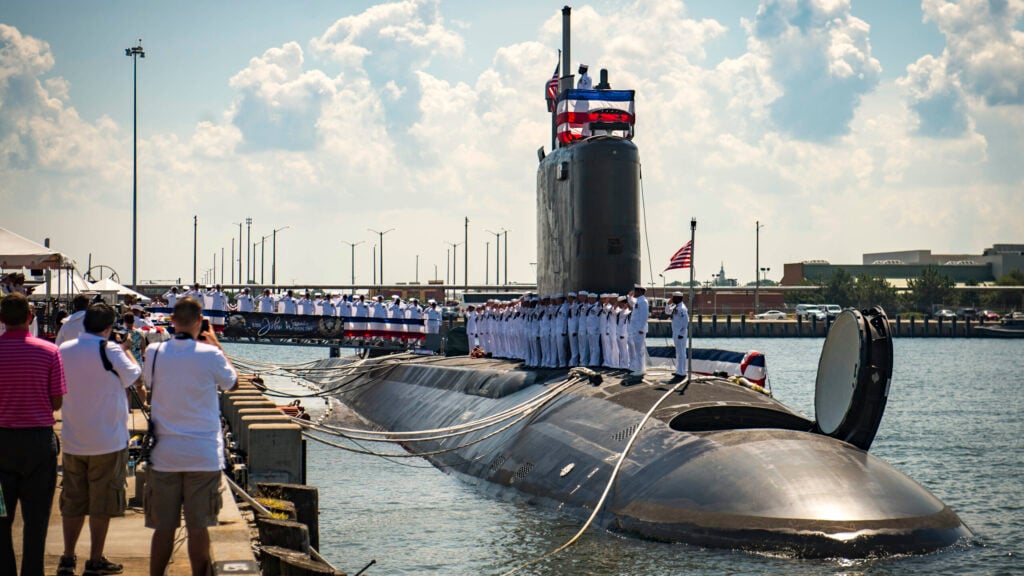
Virginia-class submarine USS John Warner at commissioning with the new Virginia Payload Module on display. US Navy photo
CANBERRA — Northrop Grumman is readying itself for what it hopes will be a steady stream of business as part of the AUKUS submarine plan for Australia, two company executives here say.
As Canberra tries to figure out its plan to buy three-to-five Virginia-class boats, as well as build its own small fleet of AUKUS SSNs, Northrop’s pitch to the Aussie military revolves around its expertise in sub propulsion and electric power generation, launcher systems, navigation systems, sonar arrays, undersea weapons and power and control systems. Since they already do all that for the US Virginia-class subs, argues Tom Wears, a former nuclear submariner who is now US senior director for strategy at Northrop’s maritime division, it makes sense to keep the firm on call as Australia moves into this new capability.
At the same time, Wears and James Lawless, head of Northrop Australia’s maritime campaign, are combing through the Lucky Country’s industrial base, looking for small and medium-sized businesses that can meet the sometimes excruciatingly exquisite standards required for parts and equipment to keep subs running — and, most intriguingly, to help expand the industrial base supplying US submarines.
“As an example, we are very proactive in Australia right now to expand the submarine industrial base with small to medium enterprises here that can provide components to the US for the US production. Okay, there’s not a ton of money in that, but it’s one of the objectives. And since we’re one of the major providers in the submarine industrial base, it’s the right thing to do,” Wears said. “And so we’re expending internal resources to come down and identify those SMEs and work to qualify them and get them in the supply chain in the US.”
Wears said the maintenance and repair work in Australia for the Virginia class won’t be “a huge amount of business because the things that we make don’t break very often — but when they do break, they gotta get fixed. And so it’s not a huge business, but it’s a capability that will need to exist in Western Australia, whether locally or with flyaway teams that come in to do that work.”
In addition to work on the nuclear-powered subs, Wears said he spent much of his three weeks traveling across Australia — to Perth, Brisbane, Sydney, Canberra and Adelaide — “trying,” he said, “to get a seat at the table when some decisions get made on priorities in terms of AUKUS Pillar II and those capability areas.”
While Northrop provides subsystems for the subs, “In AUKUS Pillar II Northrop Grumman has content in every line of effort,” he noted. Electronic warfare is one of the company’s great strengths and Northrop provides sensors and weapons for virtually all of the focus areas of Pillar II — AI and autonomy, advanced cyber, hypersonics, underwater systems and more.
But so far Northrop has not identified who it needs to talk with in Australia or the United States about these issues, Lawless and Wears said, echoing a common complaint of industry.
As things gain momentum, Wears said he’s told government agencies they need to be “transparent.”
“Provide transparency on what the path ahead is. You know, what are the ultimate objectives? What’s the timeline? What are the milestones along the way so that all industry can be ready to engage at the right time to bring the information that they need to put the plan together. From my perspective, this is to help you actually respond to them,” he said. “So that’s one thing I would encourage the government to do, is be transparent as possible on what the plans ahead are so industry can can respond and be ready.”





















